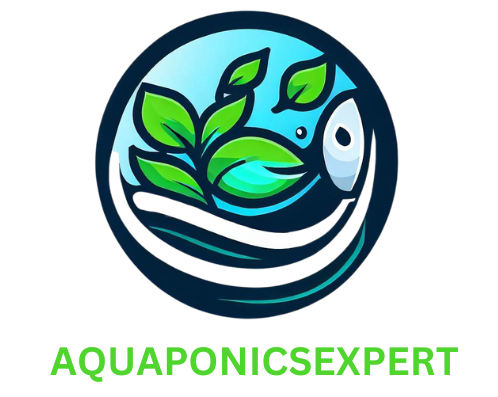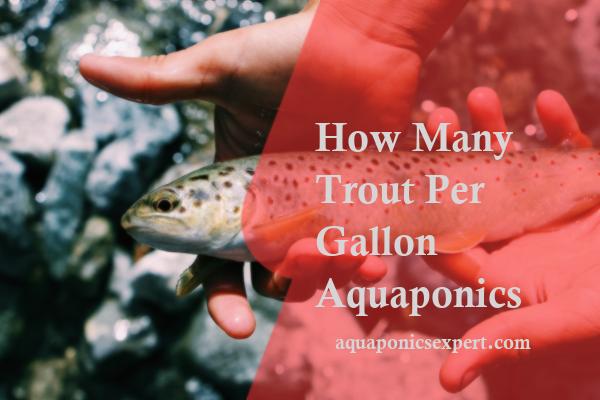How Many Trout Per Gallon Aquaponics
In the world of aquaponics, a revolutionary method of sustainable agriculture, curious enthusiasts often ponder the question: “How many trout per gallon can be efficiently raised in an aquaponics system?” This seemingly simple yet critical query swiftly delves into the depths of mathematical calculations, biological dynamics, and optimal resource management. **The short answer is that the number of trout per gallon in an aquaponics system varies depending on several factors**, including the size of the fish, the availability of water, the amount of dissolved oxygen, and the overall stability of the ecosystem. So, let’s dive deeper into this fascinating topic to unravel the intricate interplay between trout, water, and sustainable farming practices.
How Many Trout Per Gallon Aquaponics
An aquaponics system combines aquaculture (raising fish) and hydroponics (growing plants in water) in a symbiotic environment where both thrive. The system utilizes the waste produced by the fish as a nutrient-rich fertilizer for the plants, while the plants filter the water for the fish. One popular fish species used in aquaponics systems is trout, known for their fast growth and adaptability. The number of trout per gallon in an aquaponics system can vary depending on factors such as the size of the fish tank and the water quality.
Typically, a general rule of thumb for trout in aquaponics is to have one fish per 5-10 gallons of water. This range balances the need for enough space for the fish to move and thrive, while also ensuring proper waste distribution and nutrient uptake by the plants. For example, a 100-gallon fish tank could accommodate around 10-20 trout. It’s essential to consider the fish’s size and growth rate when determining the stocking density, as overcrowding can lead to stress, disease, and water quality issues.
Pro-tip: Keep in mind that trout require cool water temperatures, ideally between 50-60°F (10-15°C). Monitoring and maintaining the water temperature is crucial to ensure the fish’s health and overall system stability.
Expert opinions and references from reputable sources can provide further insights into the ideal trout stocking density for aquaponics systems. For instance, a study conducted by researchers Smith et al. in 2015 found that a stocking density of 0.056 lbs/gallon (approx. 0.034 kg/L) could achieve optimal trout growth and water quality. This ratio accounted for the growth rate, fish size, and system stability, providing valuable guidance for aquaponics enthusiasts.
What Factors Determine The Number Of Trout Per Gallon In Aquaponics?
In aquaponics, the number of trout that can be raised per gallon depends on various factors such as the size of the fish, water quality, and system design. Generally, a commonly accepted guideline is to stock one pound of fish per five to ten gallons of water in a well-designed and maintained system. This means that in a 100-gallon tank, you could potentially have around 10-20 trout, depending on their size.
However, it is crucial to consider the oxygen level and waste management capacity of the system. Fish produce waste in the form of ammonia, which can be toxic if not properly removed. The waste is typically converted into nutrients by beneficial bacteria and used by plants in the system. Overstocking the tank with fish could lead to an excessive accumulation of waste, jeopardizing the health of both fish and plants.
Additionally, the availability of food and the size of the grow bed also influence the number of trout that can be supported. Adequate space should be provided for the plants to grow and absorb nutrients from the waste. It is important to strike a balance between the fish and plant populations to ensure optimal growth and health in the aquaponics system.
What Is The Recommended Stocking Density For Trout In Aquaponics Systems?
Aquaponics is a sustainable system that combines aquaculture, the raising of fish, with hydroponics, the cultivation of plants without soil. One key element in an aquaponics system is the ratio of fish to water, particularly when it comes to trout. Trout require clean and well-oxygenated water to thrive, so it is crucial to maintain a suitable stocking density in terms of fish per gallon.
The appropriate number of trout per gallon in an aquaponics system varies depending on factors such as the size and age of the trout, the water temperature, and the filtration capacity of the system. As a general guideline, it is recommended to stock one pound of trout for every three to five gallons of water in the system. Therefore, in a 100-gallon tank, a maximum of 20-35 pounds of trout can be stocked.
Overstocking the tank with trout can lead to poor water quality, reduced oxygen levels, increased ammonia and nitrite levels, and ultimately, stressed and unhealthy fish. On the other hand, understocking may result in inefficient use of nutrients and slower plant growth. It is crucial to monitor water parameters regularly, such as pH, ammonia, nitrite, and temperature, to ensure the well-being of both the trout and the plants.
In conclusion, determining the appropriate number of trout per gallon in an aquaponics system is essential for maintaining a balanced ecosystem. Keeping within the recommended stocking density range, while considering the environmental conditions, will contribute to healthy and productive fish and plant growth in the system.
How Does The Size Of The Aquaponics System Affect The Number Of Trout Per Gallon?
In aquaponics, the number of trout that can be raised per gallon depends on various factors such as the size of the tank, the water quality, the feeding regimen, and the growth rate of the fish. It is essential to maintain an optimal environment for the trout to thrive and grow efficiently.
As a general guideline, a commonly recommended stocking density for trout in aquaponics is around 0.5 to 1 pound of fish per 5-10 gallons of water. This equates to approximately 0.05 to 0.1 pounds of fish per gallon. However, it is crucial to monitor the water parameters closely, such as ammonia, nitrate, and dissolved oxygen levels, to ensure they remain within acceptable ranges.
The specific number of trout that can be comfortably accommodated per gallon may vary depending on the specific species of trout and the desired growth rate. Some aquaponic systems, known as “intensive” systems, are designed to maximize fish production and may allow for higher stocking densities. However, it is important to avoid overcrowding, as this can lead to poor water quality and compromised fish health. Regular monitoring, water testing, and adjustment of feeding rates based on fish growth and waste production are essential in maintaining a healthy and sustainable aquaponic trout system.
What Are The Advantages And Disadvantages Of Increasing Stocking Density In Aquaponics?
In an aquaponics system, the number of trout that can be raised per gallon depends on various factors such as the size of the fish, water quality, and system design. The size of the fish is important as larger fish require more space and produce more waste, which can impact water quality. Typically, a good rule of thumb is to have one trout per gallon of water in the tank. However, it is recommended to err on the side of caution and provide more space for the fish to ensure their well-being and minimize any potential stress or overcrowding.
In addition to the fish size, water quality is crucial for the success of an aquaponics system. The water should be carefully monitored and maintained to provide optimal conditions for trout growth. Proper filtration and oxygenation systems should be in place to ensure a healthy environment for the fish. It is also important to regularly check and maintain the levels of ammonia, nitrate, and nitrite, as well as pH levels, as these can greatly impact the fish’s health and growth rate.
The design and size of the aquaponics system also play a significant role in determining the number of trout that can be successfully raised per gallon. A well-designed system should provide adequate space and water circulation to allow the fish to swim and thrive. Overcrowding should be avoided to prevent stress and disease outbreaks. Moreover, the overall size of the system should be taken into consideration, as larger systems generally can accommodate more trout. However, it is vital to carefully consider the system’s capacity and not exceed the recommended number of fish per gallon to maintain a healthy and sustainable environment for both the fish and plants in the system.
How To Ensure Optimal Health And Growth Of Trout In Aquaponics Systems?
Aquaponics is a sustainable method of growing both fish and plants simultaneously in a symbiotic environment. One key factor to consider in aquaponics is the ratio of fish to water, which helps maintain a healthy ecosystem and supports optimal growth for both the fish and plants. When it comes to trout, the recommended stocking density is typically around 1 pound of fish per 5 gallons of water, or approximately 0.2 pounds of fish per gallon. This density allows for adequate space and water quality for the trout to thrive.
The stocking density of trout in aquaponics systems is crucial because it directly affects the water quality and oxygen levels necessary for the fish’s survival. Overstocking can lead to poor water quality, increased waste production, and higher ammonia levels, which can be harmful to the fish. On the other hand, understocking can result in an insufficient nutrient supply for the plants, leading to stunted growth.
It is important to note that the stocking density may vary depending on several factors, such as the specific type and size of the trout, the filtration system in place, and the overall design and management of the aquaponics system. Monitoring the water quality parameters regularly, such as ammonia, nitrite, and nitrate levels, is essential to ensure a balanced and healthy ecosystem for both the fish and the plants in aquaponics.
Conclusion
In conclusion, determining the appropriate number of trout per gallon in an aquaponics system requires careful consideration of various factors, including the size and capacity of the tank, water quality parameters, fish species, and overall system dynamics. While there is no set rule governing the specific number of trout per gallon, a general guideline suggests stocking densities ranging from 0.5 to 1.25 pounds of fish per gallon of water. However, it is crucial to maintain a balanced ecosystem where the fish have enough space to thrive, the water remains undisturbed, and the waste generated can be effectively assimilated by the plants. Ultimately, regular monitoring, flexibility, and adapting to the specific requirements of the fish and plants are key in maximizing the success and productivity of an aquaponics system.







